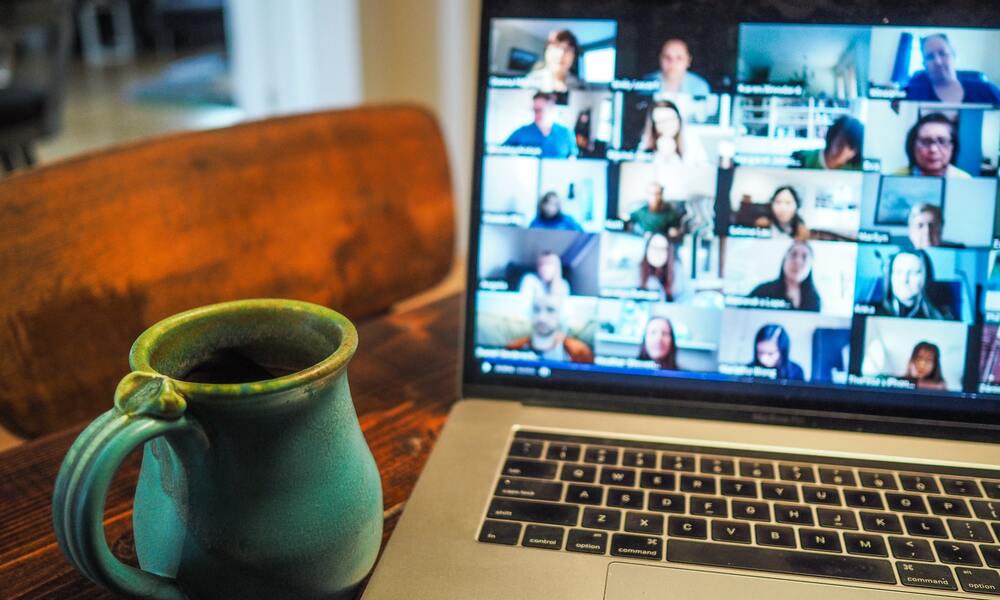
Three Steps to Building Your Association’s Workflow for Virtual Events in 2021
With a measured strategy and the right tools, you’ll avoid mistakes and burnout.
When quarantining and social distancing became the norm in 2020, there was a lot of uncertainty about when in-person events would be safe again. Optimists hoped that IRL gatherings would ring in along with a new year, but so far, that isn’t the case, and there’s no timeline for when they’ll return. Many organizations are considering hybrid events as an option for the latter half of 2021, while others are focusing on virtual events exclusively.
Shehab Moustafa, the vice president of management information systems at the American Trucking Associations (ATA), is pivoting and planning for this uncertain reality, maintaining a focus on virtual events for the time being. He is leaning on web conferencing tools and other digital platforms that pair well with the ATA’s digital environment. ATA is using an interdisciplinary approach, creating an intimate dynamic between tech experts and event planners to execute several upcoming virtual events.
Wondering how he actually finds success? Following are Moustafa’s tips for fine-tuning workflow for virtual events in 2021, emphasizing a solid tech foundation and a clearly outlined —and replicable — event blueprint.
Keep it simple and hone your flow
Moustafa’s number one recommendation for planning virtual webinars is standardization, especially if there are a lot of sessions.
“The more standard it is, the more smoothly it goes,” he said. Standardization applies to the entire process, from practice sessions to what presenters see, to who is running them, and how they pan out afterward.“ If you can keep it as simple as possible with what you have, that’s the best thing.”
And practice makes perfect, Moustafa added. Last year, as his association adapted to virtual webinars, staff rehearsed each session before the events, sometimes having as many as 30 practice sessions before an event took place. This helped iron out potential kinks and establish a plan of action “so that the live sessions would go off without a hitch,” he explained.
Pick a digital tool that serves your event and community
Choose a video conferencing tool that has a multi-session registration feature baked into it in order to streamline the attendee process. The ATA uses Webex, which automates registration by session. Moustafa noted that many popular video conferencing tools don’t have multi-session registration capabilities, so attendees get sent links to lots of meetings and sessions. “You want something that’s able to be overarching across your event sessions,” Moustafa said.
For an all-encompassing association management solution, the ATA relies on Personify360: Personify’s association management system that manages web and back office orders for meetings, event, & committee management, exhibits, products, and sponsorships. As their primary accounts receivable system, Personify360 helps Moustafa’s organization drive revenue via a complete transaction engine.
It’s also important to have a tool or platform that gives attendees a place to gather when they’re not actively participating in a meeting or session, Moustafa emphasized. This engages the community between sessions, whether through gamification with quizzes, or by simply providing a space to debrief. It also gives both attendees and event organizers a virtual environment to take a breather.
Don’t burn out
When building your standardized plan, it’s crucial also to designate experts to be in charge of all the moving parts, Moustafa said. You want a dedicated IT person in each session, a dedicated event person, and a dedicated person for any specific additional functions. For example, if you do Q&As, you want someone to lead that specific task. If you have presentations, you want a person overseeing the flow for switching from a PowerPoint to a panel view to a video.
“You want [different] people doing the different functions during the event; you don’t want one person trying to run it all,” Moustafa said. “Have a dedicated person for each function. Otherwise, you’re going to burn people out pretty quickly.”
That’s another reason why spacing things out isn’t just for registrants, it’s for internal staff. “It was such a big help when we could give ourselves some breathing room, even in our practice sessions,” Moustafa said. “You don’t realize that after a while, your eyes start to blur, you start getting headaches, and you really need to have those spaces in between to rest.”
This series by Personify is intended to serve as a guidepost for associations that are reacting to fundamental market shifts and proactively building a better future for their organizations.
(Personify)





